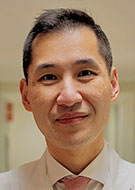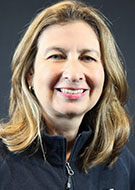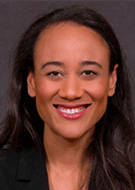Bridging the Gap in Screening Access: Radiologists Lead the Way
Overcoming obstacles requires coordinated effort



Even as health systems push for early detection, barriers to imaging persist, especially for patients in underserved communities. Experts say improving insurance coverage is not enough. To truly close the gap, efforts must focus on convenience, trust and comprehensive system-level support.
Radiologists across the country are stepping up, building mobile screening programs, redesigning outreach strategies and partnering with communities to ensure more patients have access to life-saving care.
When Cost Isn’t the Only Barrier
Insurance coverage has expanded access to preventive imaging, but for many patients, logistical challenges loom even larger.
“If you have to choose between working to put food on the table or going for a screening test, it’s understandable which one will take precedence,” said Bradley Pua, MD, division chief of interventional radiology and associate professor of radiology in cardiothoracic surgery at Weill Cornell Medicine in New York City (NYC).
Dr. Pua recently led a pilot program offering free lung cancer screenings from a mobile CT unit parked near public housing in NYC. Organizers expected a high turnout from nearby residents. Instead, most patients traveled from outside the city—and many already had commercial insurance.
“We didn’t have any from the local zip code despite parking adjacent to public housing,” Dr. Pua said. “This informed us that we needed to better align with the local community to better understand health behavior and access barriers in our communities to enhance this strategy’s effectiveness.”
Similar challenges emerge in breast cancer screening. Laurie Margolies, MD, vice chair for breast imaging for Mount Sinai Health System and professor of radiology at the Icahn School of Medicine, both in NYC, recalls one mobile mammography event held outside a food bank, where convenience made the difference.
“One woman told us she had been too busy to get a prescription and make an appointment—but when the van was right outside, she got on board,” Dr. Margolies said.
Mobile programs offer hospital-quality imaging close to where patients live and work, but even when technology is accessible, fear and distrust can still prevent patients from stepping through the door.
Building Trust Through Community Connections
Fear of diagnosis, job loss or abandonment by a partner can deter patients from preventive care. Building trust is essential to overcoming these barriers, Dr. Margolies said.
“Trust—having someone that you trust talk to you about mammography—helps,” she said. “That might be someone from your community, someone who speaks the same language, or a provider with a long-standing relationship.”
Ashley Prosper, MD, associate professor of radiology at the University of California, Los Angeles, and chair of the RSNA Health Equity Committee, emphasized that trust also depends on how information is shared. Physicians must work closely with community partners to ensure that messaging resonates.
“Listening to our community partners and allowing them to inform the way we frame our messaging is worthwhile,” Dr. Prosper said. “Sometimes, the language we use as physicians may not resonate with our intended audiences.”
Without trusted messengers and culturally sensitive communication, even free and convenient services can miss their mark.

The Hidden Costs of Screening
While lung cancer screening itself is typically covered by insurance, patients can still face significant out-of-pocket costs for follow-up care—a major deterrent to continued engagement.
“A recent study entitled, ‘The Impact of Downstream Procedures on Lung Cancer Screening Adherence,’ by Tailor et al. showed that individuals experiencing the highest out-of-pocket costs for downstream care were 15% less likely to undergo repeat lung cancer screening,” Dr. Prosper said.
Recognizing the impact of these financial barriers, some U.S. state legislatures have advanced laws that require or incentivize insurance programs to cover follow-up diagnostics after abnormal screenings. These policies aim to remove cost as a roadblock and reflect a broader commitment to equitable care.
Eligibility requirements also add complexity. For example, in lung cancer screening, taking time to calculate smoking pack-years or verifying current smoking status can slow down busy clinics and discourage both patients and providers from pursuing screening.
Overcoming these obstacles requires a coordinated effort not just to offer screenings, but to support patients through diagnosis, treatment and beyond.
“It may be simple to state we would offer free screening,” Dr. Pua said. “But it is our duty to not abandon individuals when a diagnosis is made. A comprehensive program that accounts not only for screening and accessibility, but all downstream care, is essential.”
Meeting Patients Where They Are
Radiologists are finding creative ways to meet patients’ needs—offering care at times and places that fit their lives.
At Mount Sinai, Dr. Margolies’ team began offering diagnostic mammograms and US-guided biopsies on Saturdays to accommodate women unable to take time off work during the week.
“This has made a huge difference for women who just can’t get time off Monday to Friday,” Dr. Margolies said.
The need for flexibility was underscored by a story once shared at the RSNA annual meeting: a woman traveled for hours across buses and subways to reach her mammogram appointment, only to be turned away because she arrived late. Months later, she returned with advanced breast cancer.
“My takeaway is: we have to put ourselves in our patients’ shoes,” Dr. Margolies said.
Radiologists as Advocates for Equity
Mobile units and expanded hours are important steps, but experts say the future of equitable care demands even deeper change. “Radiologists are poised to redefine the way we practice,” Dr. Pua said. “Arguably, there is no screening done now that isn’t image-based.”
By rethinking where, when, and how care is delivered—and by pushing systems to make access sustainable—radiologists can drive lasting improvements.
Dr. Prosper agreed, underscoring that the profession has a unique opportunity to lead.
“Through facilitation of high-quality, accessible lung cancer screening, radiologists have the opportunity to significantly change the landscape of lung cancer and reduce lung cancer mortality at the population level,” she said.
As radiologists across the country work to bridge gaps, their role is evolving far beyond the reading room. They are becoming advocates, innovators, and essential partners in the effort to deliver life-saving care to every patient—no matter their zip code.
For More Information
Access the U.S. Centers for Disease Control and Prevention article, “Mobile Mammography Participation Among Medically Underserved Women: A Systematic Review.”
Access the Journal of the American College of Radiology article, “Results from Lung Cancer Screening Outreach Utilizing a Mobile CT Scanner in an Urban Area.”
Access the Journal of the American College of Radiology article, “The Impact of Downstream Procedures on Lung Cancer Screening Adherence.”
Read previous RSNA News stories about health equity and medical imaging: